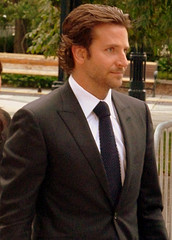Share This Article:
Return to Silver Screen Central Home page


Jennifer Lawrence is not exactly jumping with joy
B-If you want to see how David O. Russell‘s Joy went wrong, despite the presence of three of his favorite performers in the cast, look no further than the writing credits. They credit Joy‘s screenplay to Russell, but, more importantly, the story to Annie Mumolo and Russell. Translated into English, that means that Russell rewrote Mumalo’s biodrama of a scrappy inventor and entrepreneur and turned it into a mess, somewhat redeemed by a typically solid performance by Jennifer Lawrence.
Lawrence plays Joy Mangano (although her last name is never mentioned in the film), the sole voice of sanity in a highly dysfunctional household. She invents a revolutionary easy-wring mop that becomes a huge success after she persuades QVC executive Neil Walker (Bradley Cooper) to let her pitch the mop on cable television. Despite booming sales, however, a dispute over patent rights to the mop threatens to cost Joy the company she built from scratch.
Annie Mumolo wrote the original screenplay of Joy after careful research and consultation with Joy Mangano, but Fox executives thought the script needed more character development, so they turned it over to Russell for revision. The director didn’t so much develop character as invent it. Joy’s father (Robert De Niro) becomes a hapless nitwit living in the family basement along with her ex-husband (Edgar Ramirez), a failed lounge singer. Joy’s mother (Virginia Madsen) lives upstairs and spends all day watching soap operas. Russell thus turns a struggling real life lower middle class household into a version of Cinderella set in a mental institution. Russell aims for whimsy by turning these various relatives into cartoons, but the whimsical scenes rarely work, and they clash with the underlying reality. The closer the movie comes to reality, as in the scene below (one of the best in the film) at the QVC studio, the better it succeeds. Throughout all this, Jennifer Lawrence is again superb. Even though she often appears to be fighting the script as much as the forces opposing her, nobody plays resolute determination like Lawrence. Plus, in a role that is little more than a cameo, Bradley Cooper turns on his charm and glides through it as a fairy godfather who looks like Prince Charming. The first half of Joy is often listless and dragging, but enough scenes work in the more reality-based second half to give theater goers at least a bit of joy for their money.
Continue reading on Joy: Mini-review






Recent Comments